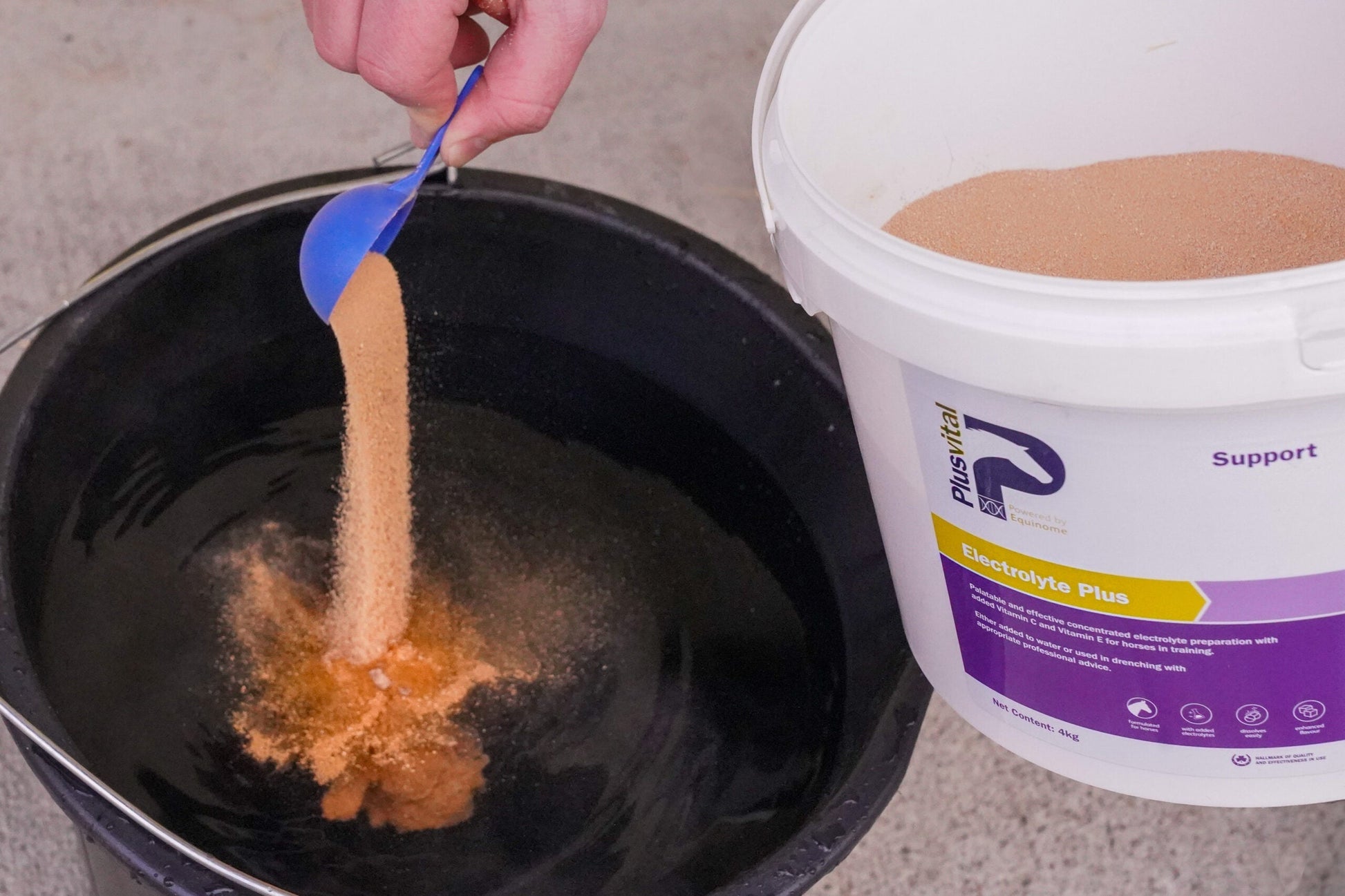From

Beat The Heat: How Electrolytes Work
As the summer weather has well & truly arrived here are some things to consider in managing your horse’s hydration & mineral levels.
Even when horses are not engaging in exercise they will passively start to loss moisture through evaporative from the skin. In a moderate temperature range of 5-20oC this can be up to 6 litres per day. Once core body temperature starts to increase as a result of exercise or high environmental temperature the total evaporative loss of fluid will depend on the intensity and duration of the exercise. With low intensity exercise (12-18 km/hour), losses can range between 5-10 litres of sweat per hour, while with high intensity exercise (30-35 km/hour), these losses can increase to as much as 15 litres per hour. The main three electrolytes lost in equine sweat include sodium, potassium and chloride. Equine sweat also contains, around 100 times lower concentrations of calcium and magnesium.
HOW ELECTROLYTES WORK
Ratios of these three ions in sweat vary, but in general potassium is present in smaller quantities than sodium and chloride. If these ions are not replaced then the consequences may include dehydration, muscular weakness, overheating, tiredness, poor performance and slower recovery after competition. Dehydrated horses have a lower blood volume which means they are less able to perfuse the skeletal muscle and skin which results in fatigue and hyperthermia. Exercise increases the requirement for these three key electrolytes substantially. An efficient way to meet this demand is through dietary supplementation with an electrolyte product. Plusvital Electrolyte Plus provides these three electrolytes in the correct ratio to match sweat loss.
Electrolytes are important for maintaining intracellular (inside cells) and extracellular (outside cells) fluid balance which is critical in controlling both blood pressure and muscular contractions. Finally, sodium is an integral part of the inherent thirst drive of a horse and when sodium is lost in sweat the thirst drive can be decreased. Supplementing electrolytes during and after competition can help in maintaining the thirst drive and keeping the horse drinking water to prevent dehydration.
GUIDELINES ON SUPPLEMENTING WITH ELECTROLYTES
–Electrolyte supplementation of an individual horse (both quantity/dose, timing of supplementation and duration of supplementation) will depend on variables including individual metabolism, environmental weather conditions, duration and intensity of training/exercise to include just a few.
– Only administer electrolytes to horses which have an increased requirement for electrolytes such as horses which will be or have been sweating a lot due to competition or other reasons.
– If a horse is being supplemented with oral electrolytes then water should be freely available at all times.
– Electrolytes cannot be “pre-loaded” into a horses system. This is because the horse’s body has carefully balanced systems to maintain the primary electrolytes in a narrow range. If electrolytes are given when not needed they will be excreted out of the body by these systems. Potentially the earliest to administer electrolytes (1-2 doses; 25-50 grams of Plusvital Electrolyte Plus) is the night before or morning before a hard competition.
– Post intense work a horse can be supplemented over a 24 hour period with an appropriate quantity of electrolytes for the amount of sweat lost. A guideline would be a quantity of between 4-6 doses (100-150 grams of Plusvital Electrolyte Plus) over this period. They can be also dissolved in water and syringed into a horse and are palatable due to the apple flavour.
Advice
For advice on all aspects of equine nutrition and care please contact Rebecca our Chief Scientific Officer.
Rebecca and her team are always on hand and happy to help.
- Rebecca Watson
- Chief Technical Officer
- +353 (0) 86 145 2288
- rebecca.watcon@plusvital.com